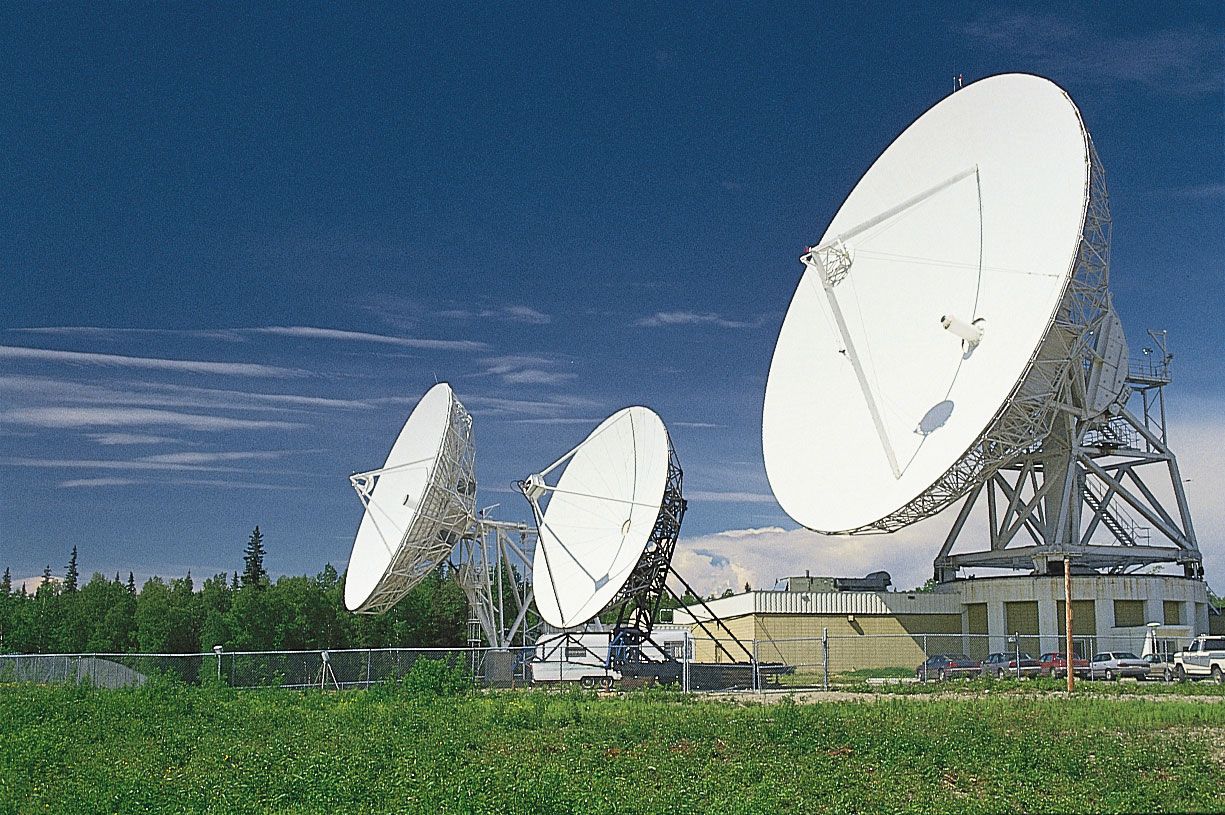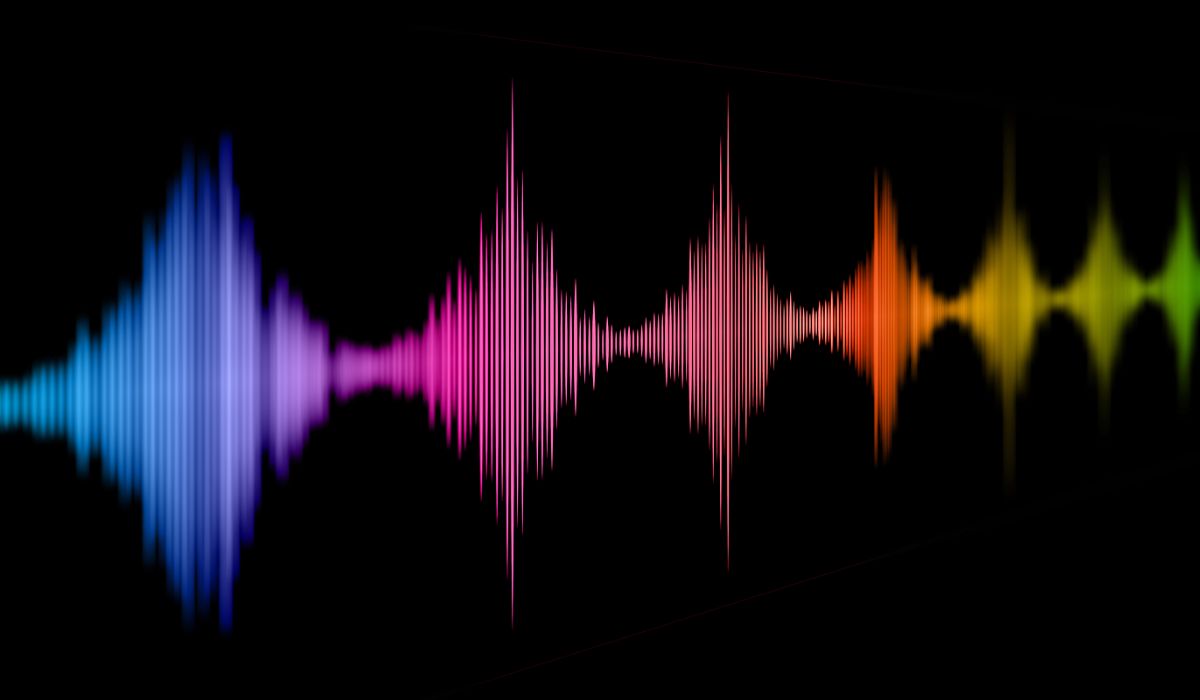Home>Devices & Equipment>Radio>How Fast Does Radio Waves Travel


Radio
How Fast Does Radio Waves Travel
Modified: January 22, 2024
Discover the speed of radio waves and how they travel through space. Learn about the fascinating properties of radio waves in this informative guide.
(Many of the links in this article redirect to a specific reviewed product. Your purchase of these products through affiliate links helps to generate commission for AudioLover.com, at no extra cost. Learn more)
Table of Contents
Introduction
Understanding the Fascination with Radio Waves
Radio waves have been an integral part of human communication and technology for over a century. Their significance extends far beyond broadcasting music and news; they are the foundation of wireless communication systems, including cell phones, Wi-Fi, and Bluetooth. Understanding the nature and behavior of radio waves is crucial in comprehending the modern world's interconnectedness.
Radio waves are a form of electromagnetic radiation, traveling at the speed of light through space. They have wavelengths ranging from thousands of kilometers to as small as a fraction of a millimeter. These waves are utilized not only for communication but also in various scientific and industrial applications, such as radar, remote sensing, and medical imaging.
The allure of radio waves lies in their ability to traverse vast distances without the need for physical connections. This characteristic has revolutionized communication, enabling global connectivity and the seamless exchange of information. From the early days of wireless telegraphy to the present era of satellite communication, radio waves have continuously shaped the way we interact and conduct business on a worldwide scale.
In this article, we will delve into the fascinating world of radio waves, exploring their speed, behavior, and the factors influencing their propagation. By gaining insights into these fundamental aspects, we can appreciate the profound impact of radio waves on modern society and anticipate their evolving role in future technological advancements.
Understanding Radio Waves
Radio waves are a type of electromagnetic radiation, possessing both electric and magnetic properties. They are part of the electromagnetic spectrum, which encompasses a wide range of frequencies, including radio waves, microwaves, infrared radiation, visible light, ultraviolet radiation, X-rays, and gamma rays. Radio waves specifically occupy the lowest frequencies in the spectrum, typically measured in kilohertz (kHz), megahertz (MHz), or gigahertz (GHz).
These waves are generated by oscillating electric charges, such as those in an antenna or an electronic circuit. When these charges oscillate, they produce electromagnetic fields that propagate through space in the form of radio waves. Unlike sound waves, which require a medium to travel through, radio waves can travel through the vacuum of space, as well as through materials such as air, water, and solid objects.
One of the defining characteristics of radio waves is their wavelength, which is the distance between successive crests of the wave. Wavelengths can vary significantly, ranging from hundreds of meters to fractions of a millimeter. The relationship between wavelength and frequency is inversely proportional, meaning that as the frequency of a radio wave increases, its wavelength decreases, and vice versa.
Radio waves are utilized in a myriad of applications, from broadcasting and telecommunications to scientific research and navigation. They enable wireless communication by carrying information through the modulation of their amplitude, frequency, or phase. This modulation allows radio waves to transmit voice, data, and other forms of information over long distances, making them indispensable in modern society.
Moreover, radio waves play a crucial role in technologies such as radar, which uses radio waves to detect the presence, speed, and distance of objects, and in medical imaging techniques like magnetic resonance imaging (MRI), which relies on radio waves to create detailed images of internal body structures.
Understanding the fundamental properties and behaviors of radio waves is essential for harnessing their potential in various fields, from telecommunications and broadcasting to scientific research and beyond.
Speed of Radio Waves
The speed of radio waves, like all forms of electromagnetic radiation, is constant in a vacuum, traveling at the speed of light, approximately 299,792 kilometers per second (186,282 miles per second). This universal constant, denoted by the symbol “c,” represents the maximum speed at which any form of energy or information can travel through space. In a non-vacuum medium, such as air or glass, the speed of radio waves is slightly slower due to interactions with the atoms and molecules in the medium.
The speed of light, and consequently the speed of radio waves, is a fundamental constant in physics and plays a pivotal role in the theory of relativity and the understanding of spacetime. This unchanging speed serves as a cornerstone for numerous scientific principles and technological applications, shaping our understanding of the universe and enabling the development of advanced communication and imaging technologies.
When radio waves are transmitted through the atmosphere or other materials, their speed can be affected by various factors, such as the density and composition of the medium. For instance, radio waves travel slightly slower through air than they do through the vacuum of space, and their speed further decreases when passing through denser materials, such as water or metal.
The speed of radio waves is a critical consideration in the design and implementation of wireless communication systems. Engineers and scientists meticulously account for the propagation characteristics of radio waves when developing technologies like cellular networks, satellite communication, and wireless internet, ensuring reliable and efficient transmission of information over long distances.
Understanding the speed of radio waves is essential for optimizing the performance of wireless communication systems and advancing the capabilities of modern technology. By leveraging this knowledge, researchers and innovators continue to push the boundaries of wireless connectivity and develop groundbreaking applications that rely on the swift and dependable propagation of radio waves.
Factors Affecting the Speed of Radio Waves
The speed of radio waves, while primarily constant in a vacuum, can be influenced by several factors when propagating through different mediums. One of the key determinants of radio wave speed is the refractive index of the medium through which they are traveling. The refractive index quantifies how much a medium can slow down the speed of light or electromagnetic waves compared to their speed in a vacuum. Materials with higher refractive indices, such as glass or water, can significantly reduce the speed of radio waves passing through them.
Another factor impacting the speed of radio waves is the frequency of the waves. In certain materials, the speed of radio waves can be frequency-dependent, meaning that waves of different frequencies may travel at different speeds through the same medium. This phenomenon, known as dispersion, can cause the separation of radio waves into distinct frequency components, affecting their overall speed and propagation characteristics.
Furthermore, the temperature and density of a medium can also affect the speed of radio waves. In gases, the speed of radio waves generally increases with temperature due to the higher kinetic energy of the gas molecules, which facilitates faster wave propagation. Additionally, the density of a medium influences the speed of radio waves, with denser materials typically slowing down wave propagation compared to less dense substances.
It is important to note that the interaction of radio waves with conductive materials, such as metals, can lead to phenomena like reflection, refraction, and absorption, which can alter the effective speed of the waves within the material. These interactions are critical considerations in the design of antennas, waveguides, and other components used in the transmission and reception of radio waves.
Understanding the complex interplay of these factors is crucial for engineers, physicists, and technologists working in fields related to electromagnetic wave propagation. By comprehensively analyzing and accounting for the influences on radio wave speed, researchers can optimize the performance of wireless communication systems, develop advanced materials for signal transmission, and enhance the efficiency of electromagnetic wave-based technologies.
Applications of Radio Waves
Radio waves have an extensive range of applications across diverse fields, playing a pivotal role in modern technology and communication systems. One of the most prevalent applications of radio waves is in wireless communication, including radio and television broadcasting, cellular networks, and satellite communication. These technologies rely on the transmission and reception of radio waves to facilitate the widespread dissemination of information, entertainment, and real-time connectivity.
Cellular networks, in particular, utilize radio waves to enable voice calls, text messaging, and data transfer, fostering seamless communication across vast geographic areas. Similarly, satellite communication systems leverage radio waves to transmit signals between ground stations and orbiting satellites, enabling global coverage and connectivity for various applications, including television broadcasting, internet access, and emergency communication services.
Beyond traditional communication, radio waves are instrumental in the field of radar, where they are employed for detecting the presence, location, and movement of objects. Radar systems utilize radio waves to measure distances, track aircraft, monitor weather patterns, and facilitate navigation, demonstrating the versatility and significance of radio wave-based technologies in aviation, meteorology, and defense.
Medical imaging techniques such as magnetic resonance imaging (MRI) also rely on radio waves to generate detailed images of internal body structures. By exposing the body to radio frequency pulses within a strong magnetic field, MRI machines can produce high-resolution images used for diagnosing various medical conditions, providing invaluable insights for healthcare professionals and researchers.
Furthermore, radio waves are utilized in industrial and scientific applications, including remote sensing, radio frequency identification (RFID) systems, and wireless sensor networks. These applications leverage the unique properties of radio waves to collect data, monitor environmental parameters, and enable automated identification and tracking of objects in diverse settings, from manufacturing and logistics to environmental monitoring and research.
The pervasive nature of radio wave-based technologies underscores their indispensable role in contemporary society, driving innovation, connectivity, and advancements across a multitude of sectors. As technology continues to evolve, the applications of radio waves are poised to expand further, ushering in new possibilities and transformative capabilities in communication, healthcare, transportation, and beyond.
Conclusion
Radio waves, as a fundamental form of electromagnetic radiation, permeate numerous aspects of modern life, underpinning essential communication systems, scientific endeavors, and technological innovations. Understanding the behavior, speed, and applications of radio waves is crucial for appreciating their profound impact on society and the myriad possibilities they present for future advancements.
From the captivating world of wireless communication to the intricate realm of radar and medical imaging, radio waves serve as the invisible conduits of information, enabling global connectivity, remote sensing, and precise diagnostics. Their versatility and reliability have propelled the development of transformative technologies, shaping industries, healthcare, and daily interactions.
As we continue to unravel the complexities of radio waves and their interactions with different mediums, we gain insights that drive the optimization of wireless communication systems, the enhancement of imaging technologies, and the innovation of novel applications. The interplay of factors influencing radio wave speed, such as refractive indices, frequencies, and material properties, offers a rich landscape for exploration and refinement, paving the way for more efficient and resilient wireless technologies.
Looking ahead, the applications of radio waves are poised to expand and diversify, ushering in new frontiers in telecommunications, remote sensing, and beyond. The ongoing convergence of radio wave-based technologies with emerging fields such as the Internet of Things (IoT), 5G networks, and advanced imaging modalities promises to redefine connectivity, data acquisition, and real-time decision-making in an increasingly interconnected world.
Ultimately, the enduring allure of radio waves lies in their ability to transcend barriers, connect distant points, and unveil hidden insights. As we embrace the captivating realm of radio waves, we embark on a journey of discovery, innovation, and boundless potential, charting a course toward a future where seamless connectivity, precise imaging, and ubiquitous communication converge to enrich lives and propel progress.











